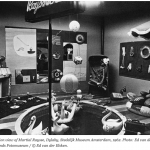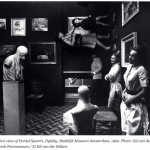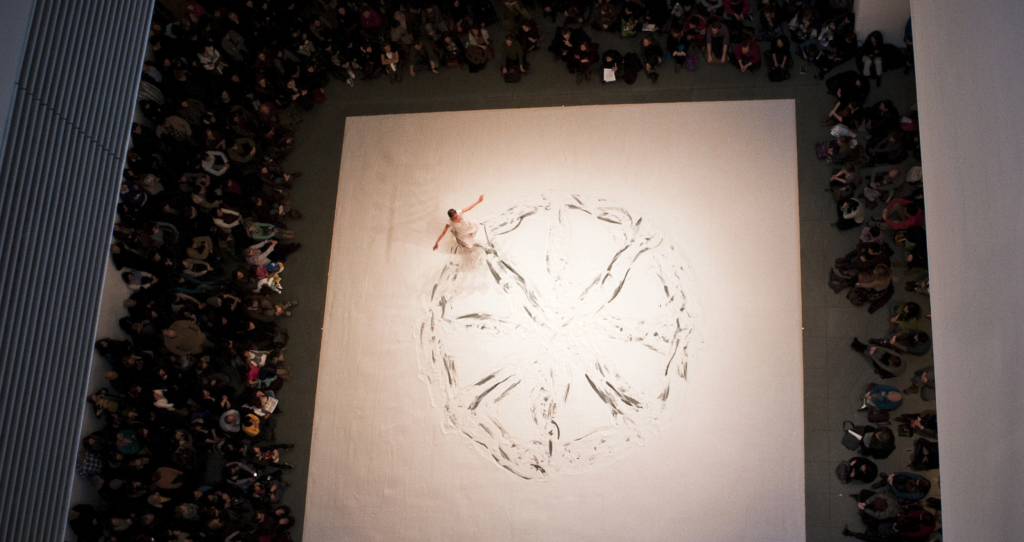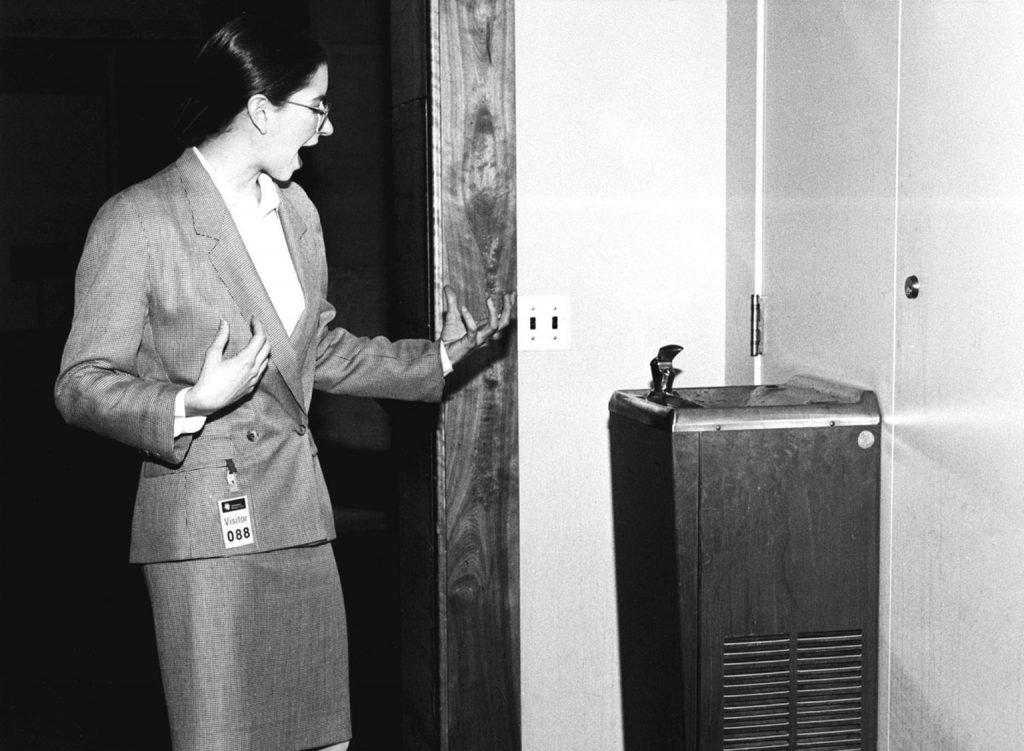- Jean Tinguely and Willem Sandberg, Dylaby (1962)
- Jean Tinguely and Willem Sandberg, Dylaby (1962)
“Dylaby (1962), an exhibition organized by Stedelijk director Willem Sandberg in collaboration with the artist Jean Tinguely, transformed the museum into an immersive labyrinth. At times dark and disorienting, the participating artists—Tinguely with Niki de Saint Phalle, Daniel Spoerri, Per Olof Ultvedt, and Robert Rauschenberg—cluttered the galleries with physical obstacles that required visitors to navigate raised platforms, climbing structures, and false stairways amidst a cacophony of noise. A celebratory atmosphere likely tempered any frustration generated by the deliberate lack of clarity in the exhibition layout, as visitors gleefully fired BB guns and danced in a sea of floating balloons. Scholars have noted that Dylaby anticipated major trends that defined art of the 1960s and beyond: active participation supplanted passive spectatorship, and both experience and environment took precedence over the autonomous art object.[1]
Less frequently discussed, however, is the actual structure of Dylaby, which gave the exhibition its title—an abbreviated form of “dynamic labyrinth.” Dylaby was far from the only exhibition to foreground the labyrinth as a central motif, metaphor, and organizing principle. Following World War II, the labyrinth experienced a revival in popularity throughout Europe, evident in works by collectives like the Letterist International, the Situationist International, and the Nouveaux Réalistes, which counted Tinguely, Saint Phalle, and Spoerri among its members. …
Upon entering Dylaby, visitors plunged into darkness, feeling their way through a dark gallery littered with objects that Spoerri coated in an array of materials creating different textures and even varying temperatures. Throughout the installations, visitors navigated raised platforms, climbing structures, and false stairways. In a second environment by Spoerri, chairs, pedestals, and mannequins affixed to a wall created the illusion that the gallery had been flipped ninety degrees (fig. 5).[27] Ultvedt built an elevated walkway strewn with white shirts, which rotated on suspended turnstiles like floating specters, evoked in the work’s title, Doorloop met spoken (Walking with ghosts). In Raysse Beach, a jukebox played The Beach Boys while people danced among plastic balls and blow-up animals floating in a kiddie pool (fig. 6). Doing the twist in the raucous Raysse Beach had all the makings of what Jaffé would describe as the ritualized dance performed in the labyrinth. If Dylaby generated a disorientation akin to the chaos endemic to modernity, it also proffered the ludic means to work through and process that confusion.” [credit]





